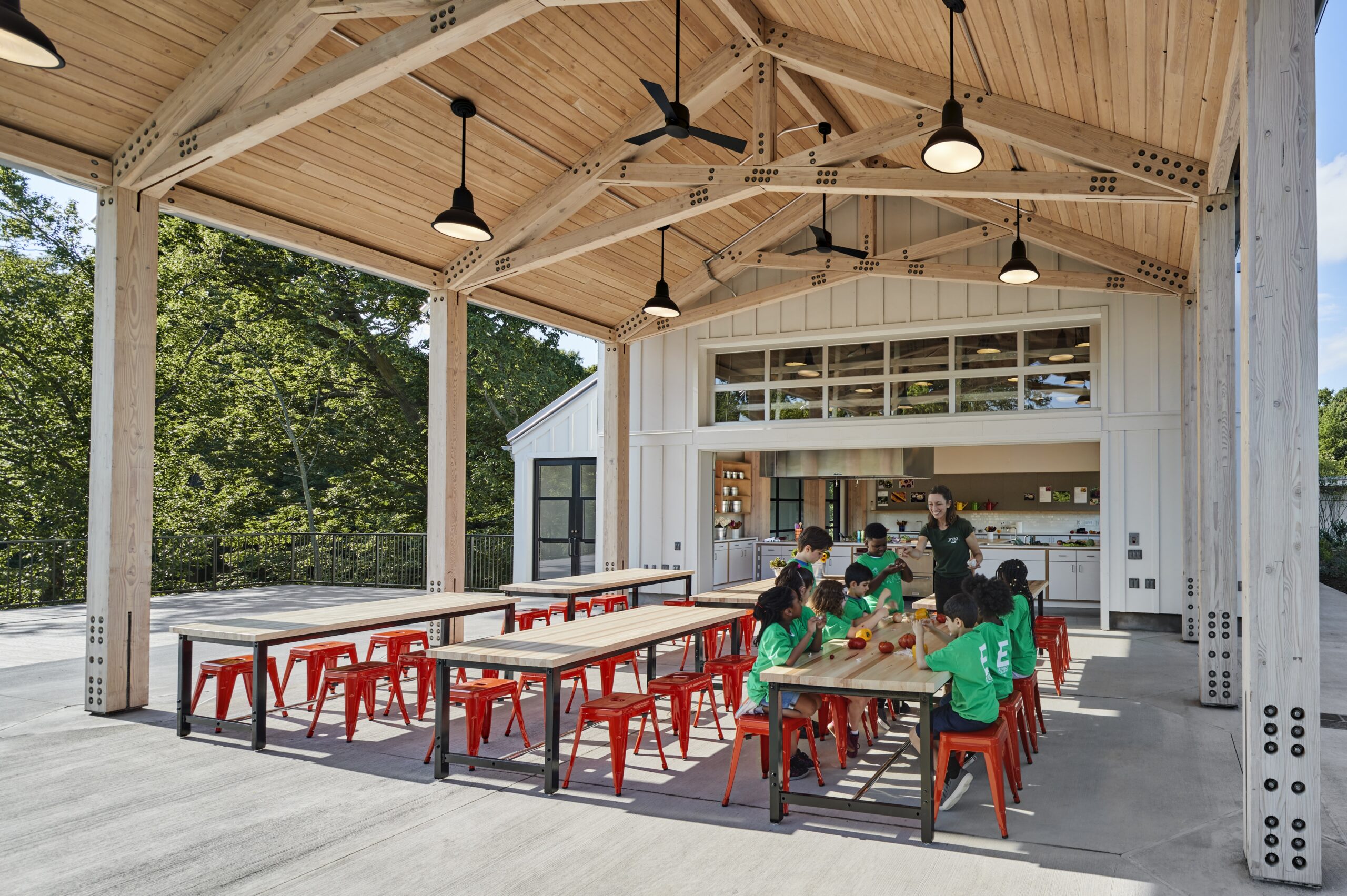By Lindsey Coulter
As architects and designers learn more about the impact of the built environment on occupant wellbeing, aspects of biophilic design are ever more thoughtfully and intentionally integrated into learning spaces. In addition to bringing natural elements and references inside schools, however, many schools are exploring true indoor/outdoor instruction spaces that increase student engagement and learning opportunities.
Architect and education design expert Elizabeth Stoel, AIA, LEED AP BD+C, director at New York-based architecture and urban design firm Cooper Robertson, sees indoor/outdoor learning spaces as one of the most significant educational design trends to emerge from the post-pandemic era. For Stoel, the growing interest in indoor/outdoor spaces reflects an evolving awareness of how children learn and thrive. However, it’s also a reflection of the urgent youth mental health crisis of increased anxiety and loneliness, fueled by both the pandemic and technology, and a related crisis in youth physical health.
“The benefits to students’ physical and mental health and wellbeing through indoor-outdoor learning cannot be overstated,” Stoel said. “Kids need to get outside, both for the sense of calm and connection that comes from being outdoors, and for the learning opportunities outdoor spaces can provide. Increasingly, learning is not about retaining information as much as it is about skill-building, problem-solving, collaboration, communication and resilience.”
Stoel believes designers have an obligation to create spaces where these things can happen – whether as small as a low-maintenance roof area or as large as a farm. The more seamlessly they are integrated with interior spaces – via operable partitions directly from classrooms, elevators to the roof, accessible paths to areas further afield – the better and more effectively they can serve the whole student population.
Green Building News spoke with Stoel on how innovative and student-centered indoor/outdoor spaces can help schools meet education goals as well as sustainability goals.
GBN: How does the ability to move between indoor and outdoor spaces create a more engaging learning experience for students?

Stoel: More than ever, educators understand that students learn in different ways and that breaking out of the traditional classroom model can be beneficial to both neurotypical and neurodivergent learners. Having outdoor space, particularly when it is contiguous with indoor space, creates opportunities for breakout groups—one-on-ones or small groups with teachers or student-led collaborative projects; messy, hands-on projects; and the ability to rotate from active STEAM-oriented study to focused work at desks without loss of learning time.
GBN: Does technology have a role to play in indoor/outdoor learning spaces, or are these spaces specifically designed to promote disconnection from devices?
Stoel: Not all outdoor spaces are the same. Schools can integrate a variety of outdoor learning opportunities into their curricula. Outdoor classrooms can be just that: spaces to conduct classes outside, fully technologically enabled just as an indoor classroom would be. Some learning opportunities may require or be aided by technology—such as plant identification in learning gardens or natural landscapes—so wireless connectivity is important.

However, disconnecting from technology and immersing yourself in the outdoors—getting hands dirty in the soil, caring for plants or animals—is known to reduce anxiety and increase wellbeing, especially for youth. Schools should create these opportunities wherever possible. An all-girls Catholic school I worked with in Connecticut recently brought 16 sheep to campus. Another community I am working with in Connecticut has greenhouses, beehives, pollinator gardens and food gardens all within its public-school campus.
GBN: How can indoor/outdoor learning spaces support a school’s sustainability goals or certification efforts?
Stoel: Outdoor learning spaces on campuses can be stormwater collectors, native plant propagators, pollinator gardens, wildlife habitat and food gardens.
Rooftop learning gardens are particularly beneficial to sustainability goals. A rooftop garden, for instance, retains stormwater—reducing runoff. These gardens also reduce solar heat gain into the building and lower the heat island effect (wherein solar heat is reflected out into the environment from built surfaces, causing the surrounding temperature to rise). Rooftop gardens can be used to create a habitat for pollinating insects and birds and be planted with native plants. Furthermore, the gardens offer students a chance to learn about all of these topics.
GBN: How can indoor/outdoor learning spaces accommodate and engage a wide variety of ages and physical abilities?
Stoel: It is well-known that being active and outdoors is beneficial to students’ mental and physical health; however, traditional school-day outdoor activities are often focused on athletics. Gardening, farming, and outdoor science or art projects offer alternative ways of getting outside that can serve a broader population, and the spaces for these activities can be designed to offer universal access to all, including students with limited mobility or significant learning differences.


